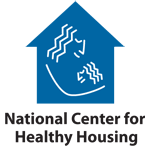|
|
Sort results by: Best Match | Date Added | Alphabetically
We do not strictly control Google ad content. If you believe any Google ad is inappropriate, please email us directly here.
- Is your family and home prepared for a disaster?
- The answer is “not necessarily,” according to a report released by Environment and Human Health, Inc. (EHHI), titled “LEED Certification: Where Energy Efficiency Collides With Human Health.” EHHI is a non-profit organization composed of doctors, public health professionals and policy experts who specialize in research that examines environmental threats to human health.
- Humidity refers to the water-vapor content of air. Because there is always some moisture in the air, it can be difficult to think of humidity as a pollutant. Yet, if your indoor air contains high levels of water vapor, it can cause major problems.
- Controlling dust mites involves thinking about the whole home. Here are tips to avoid being part-smart.
- Dust mites and bed bugs are very different organisms and impact humans in different ways.
- There are many health factors to consider in usage and installation of electric systems. Here's an overview of them.
- From The Healthy House Answer Book: Answers to the 133 most commonly asked questions. Questions 55-63.
- Designing and building an energy-efficient home.
- Three viewpoints of designing a healthy building include: the importance of sustainable development, the role of occupants for ensuring indoor air quality, and ongoing developments related to indoor finishes with low chemical emissions and good fungal resistance.
- Viewing the whole house as an integrated system helps.
- Electronics, especially appliances, are some of the heaviest users of energy, and often consume energy even when they're not in use. Learn which electronics are the biggest offenders.
- Today’s growing concerns toward high energy costs, dependence on foreign oil and pollution-generating fuel sources are all driving the construction industry to pursue more energy efficient technologies for the home.
- An examination of 13 common myths reveals that they should be treated with some healthy skepticism.
- With energy prices skyrocketing and the temperature continuing to spike, most homeowners dread receiving their energy bill in the height of summer. But what most homeowners don’t realize is that they could own a high performance home that requires much less energy.
- EPA's Energy Star program now addresses indoor air quality (IAQ). Here is a summary of requirements you can use to improve your home's IAQ.
- Searchable databases on chemical toxicity and exposure data are now available for scientists and the public.
- January is national Radon Action Month and the U. S. Environmental Protection Agency encourages everyone to test their homes for radon.
- NSF works with DfE to help consumers identify products that are safer for the environment and their health.
- EPA allows safer products to carry the Design for the Environment (DfE) label. This mark allows consumers to quickly identify and choose products that can help protect the environment and are safer for families.
- Determine which fruits and vegetables have the most pesticide residues and are the most important to buy organic.
We do not strictly control Google ad content. If you believe any Google ad is inappropriate, please email us directly here.



Information provided by The Healthy House Institute is designed to support,
not to replace the relationship between patient/physician or other qualified
healthcare provider.
Education Partners
Ads, ad links, products and content on this page are not necessarily endorsed by these organizations.
|

We do not strictly control Google ad content. If you believe any Google ad is inappropriate, please email us directly here.
|








